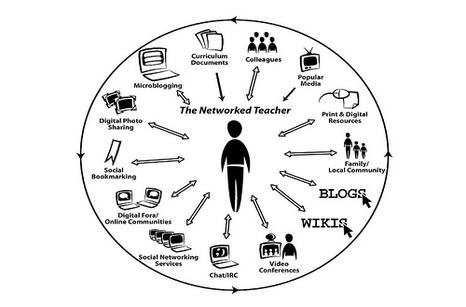PERSONAL LEARNING NETWORKS AND EDUCATION

- How does a PLN help and hinder the development of thoughts and ideas in education discourse?
- How does a PLN help and hinder the development of thoughts and ideas? A PLN enables people to connect with people they never would have met in their lives. By doing that they can have more exposure to real life connections by a diverse group of people. A PLN also provides exposure to relevant and updated information, it can change every minute. When more than one person thinks together collaboration has the ability to create some wonderful discussions and new ideas. Some things that could hinder some thought development are things such as Fake News, platforms or hashtags with limited exposure, and information overload. Fake News can give people the wrong idea and this could lead to them going down the rabbit hole of misinformation. Like minded people may be looking at the same topics which can limit the type of people looking at and responding to the information, I think it really depends though on the topic. Thirdly, information overload can turn people away from reading some really great stuff, a person may not know what is real or what is important.
- How do educators create discourse?
- There are a variety of big ideas educators need to focus on which were heavily discussed in Chapter 9 of the readings this week. (Designing for Open and Social Learning by Alec Couros and Katia Hildebrandt) One is open communication, “Open courses thrive on evolving structures and principles, embracing change and innovation while fostering connections and enhanced learning experiences.” (Designing for Open and Social Learning by Alec Couros and Katia Hildebrandt). Open communication allows for an environment where people can learn together through asking questions and sharing ideas. I feel like teaching is a wonderful career example that this can be very successful in. When teachers work together wonderful ideas and ways of thinking are shared and usually result in a stronger knowledge backpack. Using collaborative platforms and a variety of different style of lessons is really important too to reach all types of learners. Online communications provide a good place for learners to connect and share ideas too. They can also take their own paths based on interest.
- What is the role of social media in education? Pros and Cons
- Social media provides many benefits and challenges in education. For one, students get excited about using technology at school. They do a lot of pen to paper at school but working online provides a different method for learning. It can support the kids with challenges (text to voice, voice to text) and it can also support the gifted students, providing them with endless information and guidance to explore based on their exact interests. Social Media can connect students around the world, sharing experiences and widening students perception of people around the world. You don’t have to just read about them in books you could video or voice call or share videos. Educators can also connect and share learning ideas. Something that is challenging is privacy and security. More and more often people are being scammed and tracked. It can be limiting having to use certain sites, but overall it can be safer to have the employer watching out for students security so the teacher doesn’t have to worry if you follow the schools plan. Social media provides more ways to show learning. I think it helps reach all types of learners. Another thing that is always a problem is when students are not following the group plan and become distracted and may waste their time or go onto inappropriate sites. Bad sites are too easily accessible for anyone, even with restrictions. Social media can be an extremely valuable tool if digital literacy is taught.
- Reflect on the themes of a PLN in a professional capacity.
- Professionals can explore so many themes professionally. The great thing is the themes provide learning tools based on interests and goals. First of all, focusing on STEM education there are so many conversations and resources available to teachers. It is something that provides an engaging and extremely educational approach to students. Inclusion and diversity is the second theme that can be explored. This theme creates inclusive classrooms, addresses diverse learning needs, and promotes equity in education.
- Which social media platforms are beneficial in education?
- Personally, Pinterest and Facebook are social media platforms that I use to support my teaching. I am planning on exploring Twitter more because of this course and the podcasts where people continuously mention the 24/7 support online. YouTube of course is another one that can be used as an educational tool. It has videos on almost every educational topic. Connecting last week to this topic, I now make sure I watch every video before I use it in my classroom because I have wasted time on videos that were not engaging, meant for the wrong age group or irrelevant. Check your sources! Finally, Google Classrooms is my favourite to use with my students to share their work and allow feedback.
- When working with the vulnerable sector, how does social media fit into professionalism and regulations?
- Ultimately, social media is a valuable tool for inclusion, and connecting people. However, its extremely important to follow school district rules to protect your job, students and families from unsafe information online. Besides from children, seniors are also vulnerable users online. Seniors have less embedded experience and therefore are more susceptible to scammers online on platforms.
Leave a Reply